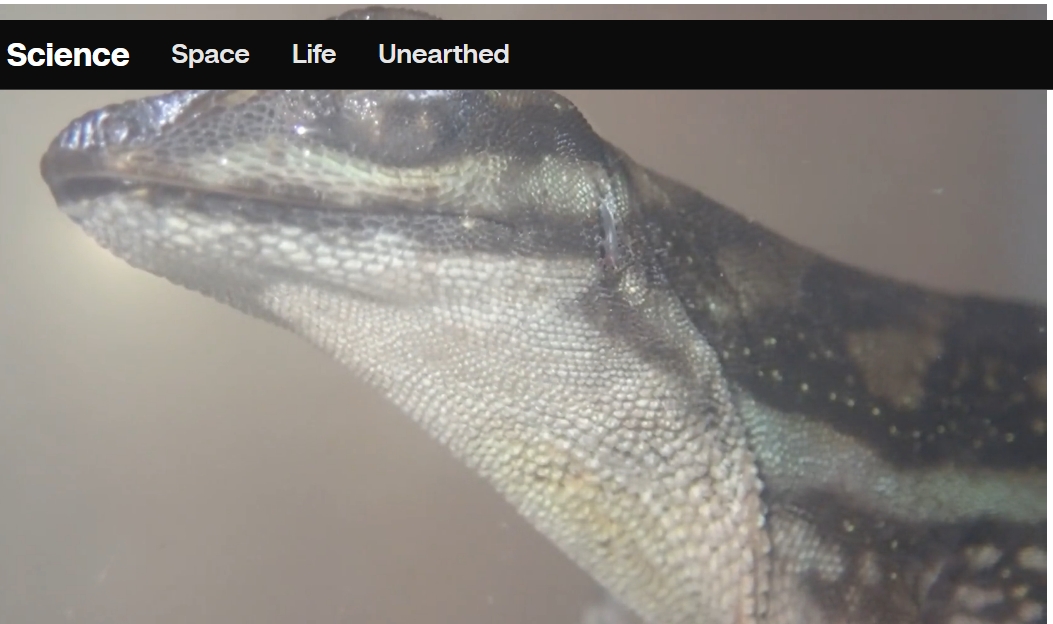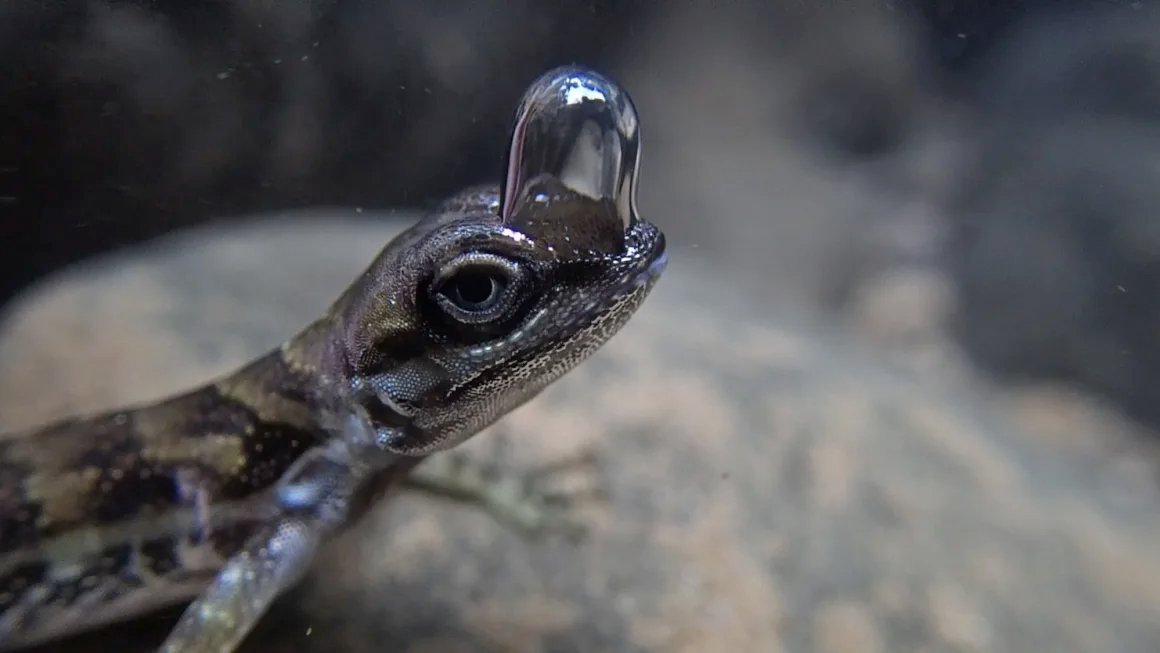In a Costa Rican rainforest, a semiaquatic lizard called a diving anole uses an unusual method to prolong its time underwater. The lizard traps an air bubble on its head, which swells and deflates, allowing it to breathe stored oxygen while submerged, according to Dr. Lindsey Swierk, an assistant research professor at Binghamton University.
Swierk's recent study, published in Biology Letters, found that this bubble-breathing technique helps anoles hide from predators like birds and snakes. During her experiments with the species Anolis aquaticus, Swierk observed that bubble-breathing anoles could remain underwater for an average of 3 ½ minutes — 32% longer than those that were prevented from forming bubbles. A throat-pumping action called gular pumping may play a part in circulating stored oxygen, affecting how long anoles can stay underwater. Lindsey Swierk
A throat-pumping action called gular pumping may play a part in circulating stored oxygen, affecting how long anoles can stay underwater. Lindsey Swierk
While air-breathing insects like water beetles and diving bell spiders use a similar tactic, anoles are the only vertebrates known to use bubbles for respiration. Swierk collaborated with other researchers to better understand how the bubble-breathing mechanism works. They discovered that anoles trapped oxygen-filled bubbles on their heads, possibly stored in their lungs or air pockets on their skin, which helped prolong their dives.
However, this strategy comes with drawbacks. Mountain streams are cold, and anoles, being ectotherms, rely on their environment to regulate body temperature. Prolonged exposure to cold water could impair the lizards’ ability to run, defend territory, or digest food. Additionally, if a predator spots a submerged anole, it might simply wait for the lizard to resurface.
Swierk continues to explore how anoles’ head shapes and skin structures might affect bubble formation and whether the lizards absorb oxygen from the water while submerged.




_主圖.jpg)

